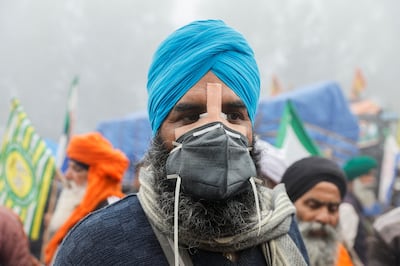Mass protests continue in India by farmers demanding guaranteed prices for the purchase of grains, maize, cotton, beans.
On Wednesday, the number of protesters exceeded 10,000. Indian police fired tear gas to disperse a crowd of angry farmers who tried to resume a march on Delhi after rejecting a government proposal to price their produce while authorities offered a new round of talks.
The mass protests by Indian farmers come amid an offer by Prime Minister Narendra Modi’s government to resume talks on farmers’ demands. Agriculture Minister Arjun Munda urged farmers to resolve their grievances through negotiations. He wrote on X:
After the fourth round, the government is ready to discuss all the issues. I again invite the farmer leaders for discussion. It is important for us to maintain peace.
Farmers’ leaders gathered to discuss the proposal Wednesday after the march was stopped due to police action, Indian media reported.
Earlier this week, protesters rejected a previous government proposal for five-year contracts and guaranteed support prices for products such as maize, cotton and pulses.
Farmers, mostly from the northern state of Punjab, are demanding higher prices for their crops backed by law. They form an influential bloc of voters whom Prime Minister Narendra Modi cannot afford to anger ahead of general elections scheduled for May.
About 10,000 people gathered on Wednesday along with 1,200 tractors and wagons at Shambhu on the state border, Haryana police said on website X.
Security was beefed up at the entrances to New Delhi, with police setting up barricades surrounded by barbed wire at some places, slowing traffic in the more than 20 million-strong city and causing congestion.
The government’s Sunday offer of minimum support prices for farmers who are diversifying their crops by growing cotton, pigeon peas, black mate, red lentils and maize was rejected by protesters seeking additional food items.
Similar protests two years ago, when farmers camped on the New Delhi border for two months, forced the Modi government to repeal several agriculture laws.
About 65 per cent of India’s population lives in rural areas, and most of them are not the most affluent. Thus, problems in the agrarian sphere are closely linked to poverty levels, therefore causing mass unrest and remaining one of the main challenges for the government ahead of the parliamentary elections in May 2024. According to estimates by consulting firm Verisk Maplecroft, India has accounted for the largest share of farmer protests over the past three years.
